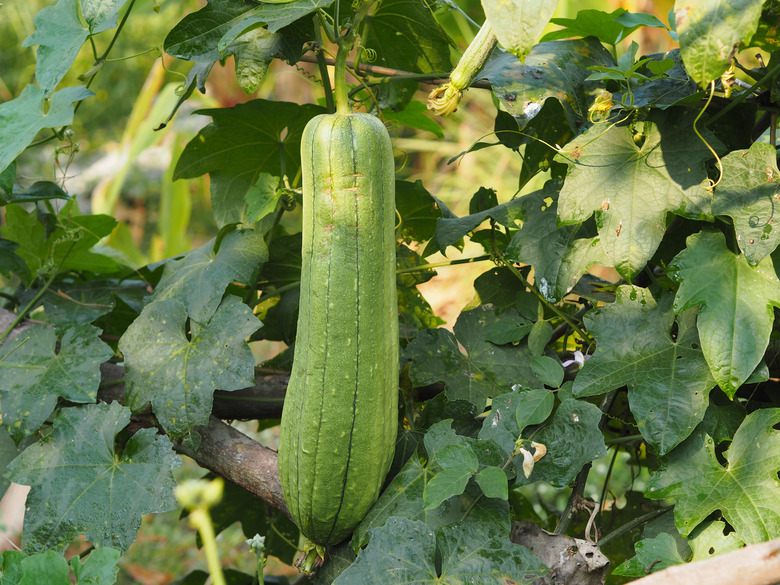How To Pick And Dry Loofah Gourds
Looking for a unique gardening project? Growing and drying loofah sponges right from your home garden is an option. The homemade loofahs come from a mature gourd, which you can use just like the ones you buy at the store.
Basics of Loofah Plants
Fast-growing annual vines with yellow blooms up to 5 inches across, loofah plants (Luffa spp.) usually require a four-month growing season to produce mature gourds. Therefore, gardeners in the north may need to start them indoors about four to six weeks before the last spring frost.
During the summer and early autumn, the heavy vines should be grown in humus-rich soil in full sun, preferably on a sturdy trellis or fence to keep their 1 to 2-foot gourds off the ground. Those fruits must be harvested before or just after the first autumn frost and are used both as bath sponges and dish scrubbers.
Pick and Peel Mature Sponges
If you live in an area with a long growing season, allow your loofah gourds to dry on the vine until their skin is brown and brittle and starts to pull away from the fibers inside the gourd. The grounds will feel lightweight at this point, and you should be able to hear seeds rattle when you shake the gourds.
Break open the skin at the blossom the end opposite the stem of the gourd to reach those seeds, if you wish to save them. You can use the seeds to plant more loofah plants next year. It usually is easy to pick off the rest of the brittle skin with your fingers to reveal the sponge beneath. If you prefer, you can dunk the gourds in a bucket of water instead, for any time period lasting from 5 minutes to several days, and peel off their skins in wet strips.
Pick and Peel Immature Sponges
If your growing season in your plant hardiness zone isn't quite long enough, you can harvest adequate sponges from gourds that have only partially yellowed, as long as their skins are beginning to slip. You should harvest the sponges when the first frost hits, even if they're not fully mature. After you make an opening to save the seeds, grab the end of one of the fibers running the length of the gourd's ridges and pull on it to unzip the remaining skin.
Clean and Dry the Sponges
Immediately plunge a less-than-mature sponge into a bucket of water to wash out any juices that remain due to its only half-dry condition. Although the sponge still will be white at that stage, it's a good idea to soak it in a bleach solution to eliminate fungi and bacteria. Mature sponges also should be immersed in a bleach solution of 4 tablespoons of bleach per 1 gallon of water, both to kill contaminants and to brighten their naturally off-white color.
After disinfecting the sponges, rinse them with clean water and spread them in the sun to dry. A porous surface works well for this purpose. You can turn screens into drying tables by laying them horizontally on top of sawhorses. Turn the sponges regularly so they dry on all sides. Once they're completely dry, store them in cloth bags to keep them clean until you need them.
